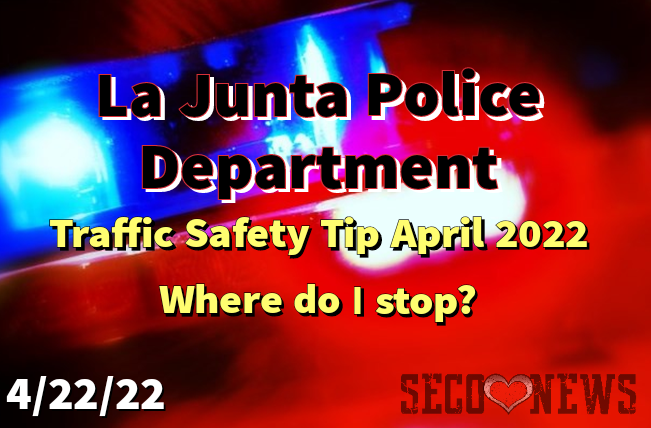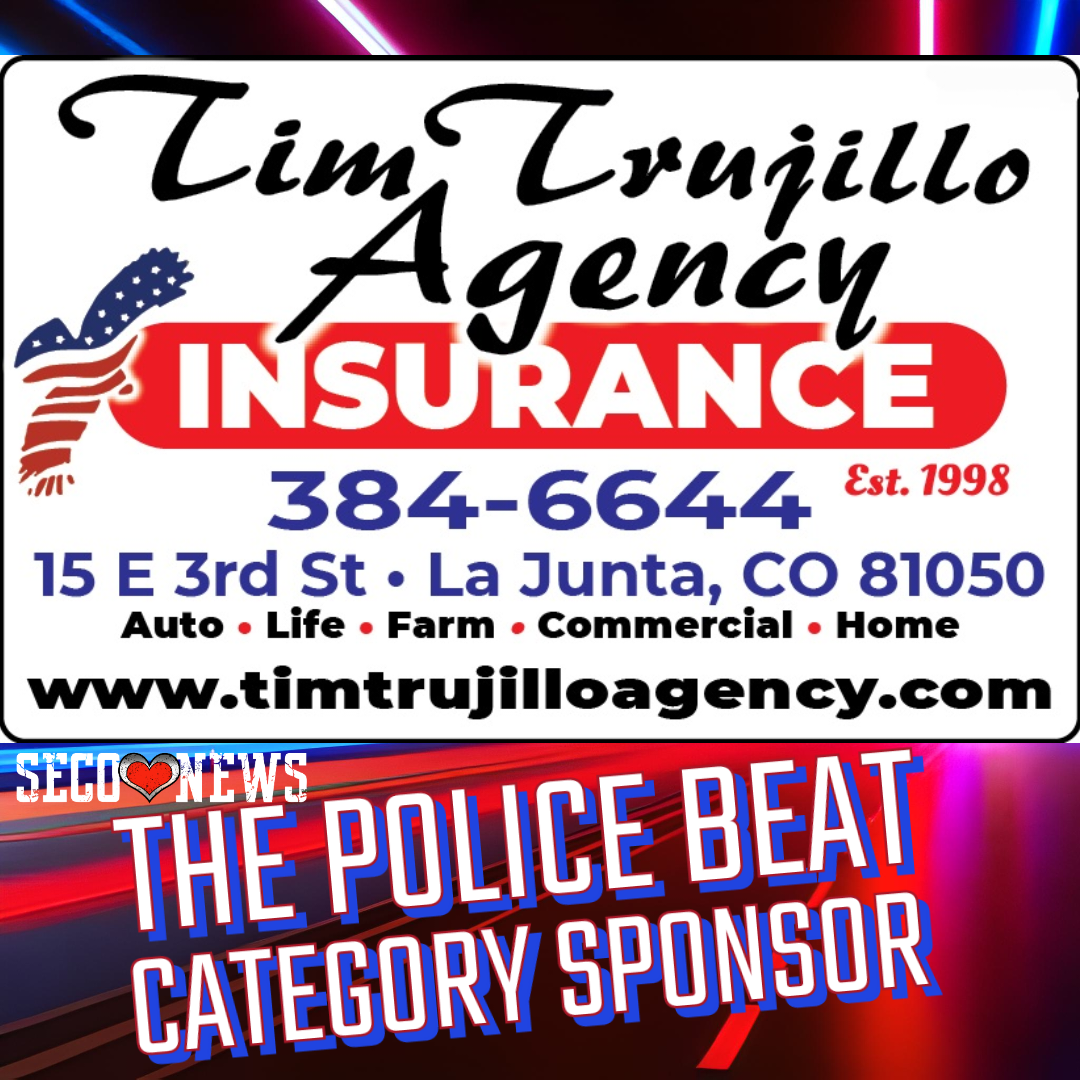LJPD Traffic Safety Tip April 2022 - Where do I stop?

Description: The April Traffic Safety Tip from The La Junta Police Department.

LJPD Traffic Safety Tip April 2022
Where do I stop?
Many drivers are unfamiliar with the law on where to stop their vehicles when they come to an intersection where they are required to stop. Different cities and towns have different marking methods for crosswalks and stop lines and, depending on where you are, they may not be marked. So how do you know where you’re supposed to stop, then? Well, here’s some information to help you out.
A crosswalk is the portion of a roadway where pedestrians can cross a street. These are usually seen at intersections but they can also be in the middle of a roadway without an intersection present. Sometimes these are marked by solid white lines that border the crosswalk zone and sometimes they may have large painted rectangles. However, just because there is a crosswalk, doesn’t mean that the zone will be marked or painted.
A stop line is usually a line that is painted solid white and covers all or most of the width of the lane of travel. This line indicates that you need to stop your vehicle before you reach the line. Stop lines can sometimes be seen coupled with or in addition to a marked crosswalk.
The Colorado Revised Statutes (C.R.S.) that define where to stop at stop signs, red light traffic signals, yield signs, and uncontrolled intersections, generally all state the same basic information when referring to where a vehicle should stop. The following is an excerpt from 42-4-703 C.R.S. “Except when directed to proceed by a police officer, every driver of a vehicle approaching a stop sign shall stop at a clearly marked stop line, but if none, before entering the crosswalk on the near side of the intersection, or if none, then at the point nearest the intersecting roadway where the driver has a view of approaching traffic on the intersecting roadway before entering it. After having stopped, the driver shall yield the right-of-way to any vehicle in the intersection or approaching on another roadway so closely as to constitute an immediate hazard during the time when such driver is moving across or within the intersection or junction of roadways.”
Make sure that you pay attention to where the crosswalk or stop line is. Stop before you reach these. If there is no crosswalk or stop line, come to a complete stop before the intersecting roadway. Make sure that you completely stop your vehicle. If you can’t see clear enough to yield to the traffic on the intersecting roadway, then you can cautiously proceed forward after stopping until you have a clear view and you can safely proceed.
What does it mean to come to a complete stop? A complete stop simply means that your vehicle has ceased moving in the direction it was and your tires have stopped rolling. A good indication of a complete stop is to watch the front end of your vehicle rise back to normal rest after it has dipped forward from the momentum of your vehicle’s movement. Coming to a complete stop is important because it gives you time to make sure that you have thoroughly checked that it is safe to proceed, and it’s the law.
Join The Lower Arkansas Valley Crime and Safety Alert Group on Facebook.
Follow SECO News on Facebook.
Subscribe to the SECO News YouTube Channel.
Press releases Sponsor






.png)






.png)
.png)


.png)







